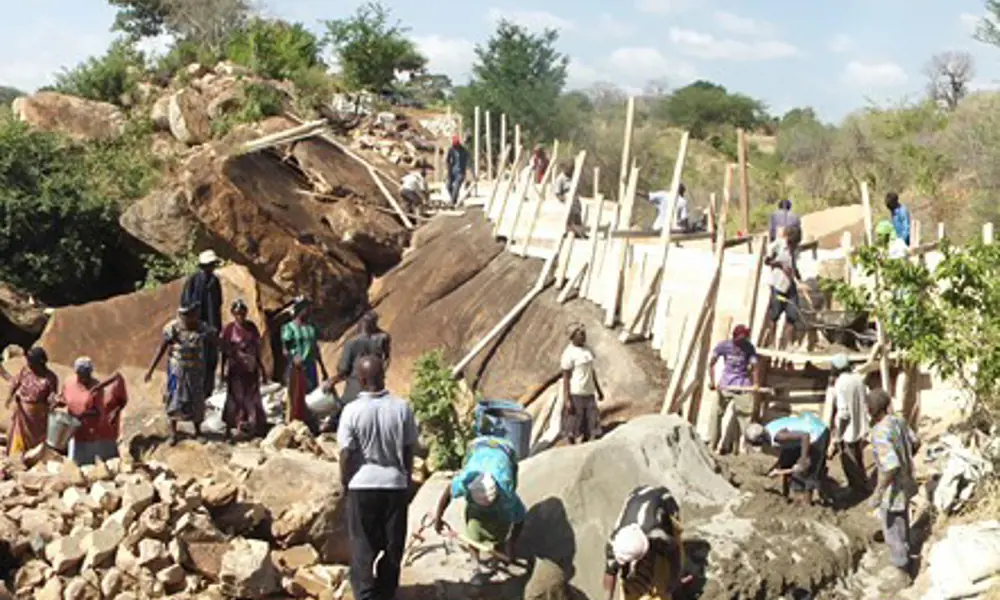
Securing water supplies with sand dams
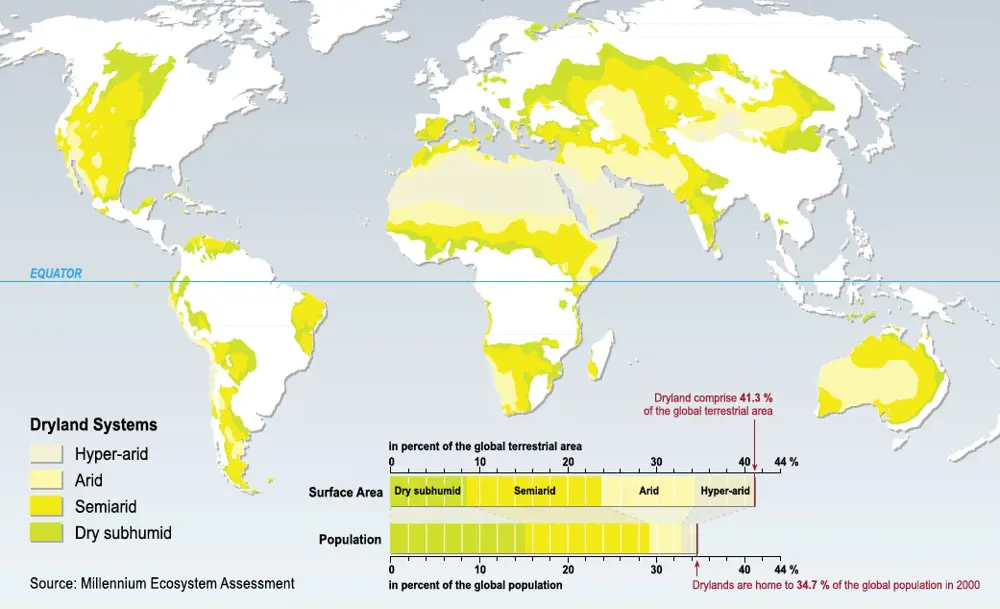
Countries with sand dams or similar systems © Millennium Ecosystem Assessment
A large part of the world, over 40% of the earth’s surface, consists of drylands – hyper-arid, arid, semi-arid and dry subhumid areas with concentrated periods of seasonal rainfall. These drylands which cover large areas of Africa and Asia are home to around 2.3 billion people, mostly living in rural poverty trying to eke out a living in a tough climate. Millions do not have easy access to a safe water supply and are isolated from goods and services due to poorly maintained roads. Ironically, the same people tend half of the world’s livestock and produce over 40% of the world’s food.
The UK charity Excellent Development has been pioneering a low-tech solution to help combat poverty in Africa and Asia by building sand dams with local partners and community self-help groups. The charity has enabled the building of 884 sand dams for over 850,000 users since 2002 and is aiming to considerably increase the rate of construction in the coming years.
Simon Maddrell, Executive Director at Excellent Development, became aware of sand dams in 1984. He explains that these dams are based on structures that have been built since 400 BC and have existed in Kenya for at least 100 years. They were built sporadically during colonial times and then in 1980 a farmer and development worker, Joshua Mukusya, introduced the sand dam in South East Kenya. Mukusya’s work inspired Maddrell and led to the creation of the three main organisations in Kenya that build sand dams.
Excellent Development has supported work in nine different countries, with partners in India (Rajasthan) and Africa (including Zimbabwe and Mozambique). While much of their effort has previously been focused in Machakos and Makueni Counties in South East Kenya – now the charity is also supporting community conservancies in the Northern Rangelands of Kenya.
We’re six inches from extinction; that’s the crust of soil around the earth which keeps all land species alive
Extreme weather patterns mean that drylands often get rain so intense that it damages crops, causes flooding and erodes the topsoil. “We’re six inches from extinction; that’s the crust of soil around the earth which keeps all land species alive” says Maddrell. He maintains that the only solution to poverty in drylands is to conserve water and soil. Sand dams capture seasonal rain for year-round use and have the potential to work in a large percentage of drylands. Not only that, they save communities up to five hours a day fetching water, (up to 11 hours during droughts) time that they can invest in sustainable land management.
What is a sand dam?
A sand dam is a reinforced rubble masonry wall consisting of cement mortar, various sized rocks reinforced with steel rebar and barbed wire. It is built across a seasonal, sandy riverbed and captures and stores water within the sand behind it. Typically, sand dams are built in the transition zone between hills and plains where the gradient of the riverbed is between 0.2–4% – the upper-middle sections of a river catchment. The dams must be built on impermeable bedrock. Those built in South East Kenya most often range in height from 1.5 m to 4 m from the riverbed to the central spillway and span channels 10 m to 30 m wide. Dams of this size store in the region of 2–30 million litres of water and recharge after each rainfall – the larger ones store enough water to supply 1,200 people all year round.
A sand dam is a reinforced rubble masonry wall consisting of cement mortar, various sized rocks reinforced with steel rebar and barbed wire
Sand dams only work when built in seasonal rivers where there is sandy sediment, enabling water to be stored and abstracted. Eventually, the dam will fill up with the sediment that is already in the river. During the rainy season, the lighter silt is washed downstream and it is the heavy sand and rainwater that remains in the reservoir behind the dam wall. The sand in the water sinks and the remaining silt goes over the top and eventually the dam is totally full of sand holding water. The remaining sand protects the water from contamination and evaporation. Sand dams do not deprive communities downriver of water because between 97% and 99% of the water flowing in the river continues downstream.
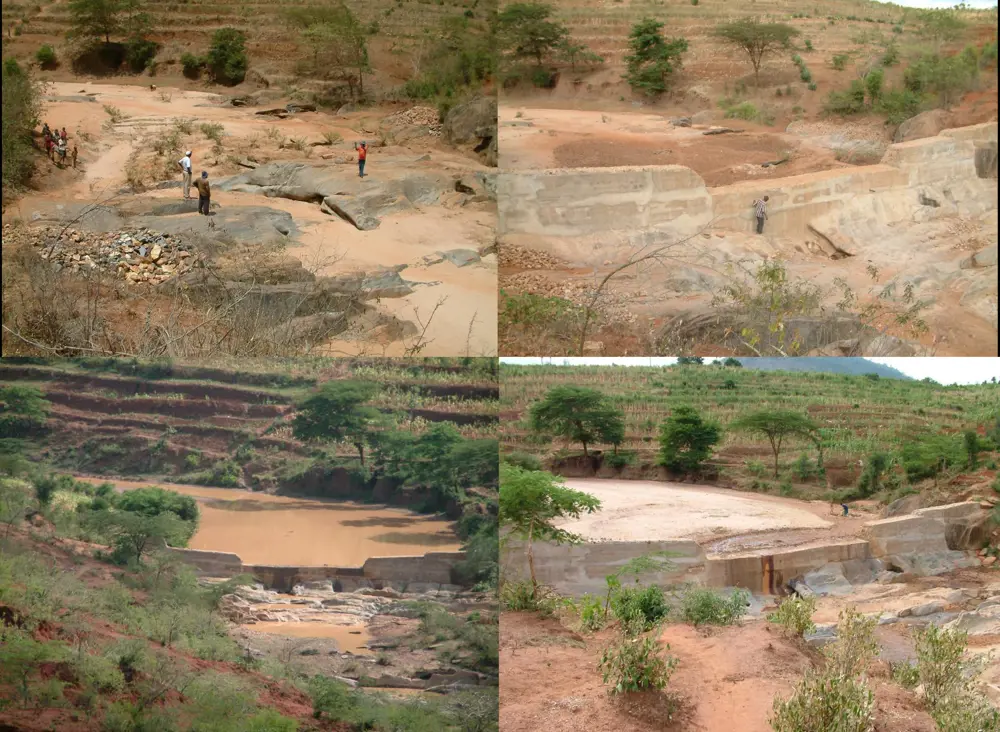
Mbuani dam in the Nzyaa Muysio Valley, Makueni County, Kenya at different stages of development. Original site (top left), following construction and low rainfall that has accumulated some sand (top right), dam filled with rainwater containing soil (bottom left), two-year old mature dam filled with sand holding water (bottom right).
Sediment testing
⏳ Why sediment testing is important and properties of sand compared to silt and clays
Sediment testing is critical in order to ensure that the sediment will store water that can then be abstracted for use. Therefore the grain size, porosity and depth of the river sediment is tested when considering possible sand dam locations. The ideal sediment has a high sand content (especially coarse to medium sands) and little or no silt and clay content. The higher the percentage of coarse sand and the more uniform the sediment is, the greater storage and abstraction potential from the dam. Compared to silt and clays, sand:
- has a high porosity and extractable yield
- has a high infiltration rate of water into the aquifer: coarse sand more so than fine sand
- has a high abstraction rate of water from the aquifer: coarse sand more so than fine sand
- filters the water more effectively: fine sand more so than coarse sand
- has a low evaporation rate compared to finer sediments: coarse sand more so than fine sand.
The graph shows how porosity and drainable porosity (defined as the volume of water that drains from the sediment under gravity) vary according to particle size. It shows that a coarse sand stores and yields the most water. Tests on Africa Sand Dam Foundation (a registered Kenyan NGO, one of Excellent Development’s strategic partners) dams have found that sediment that collects behind a dam is very similar to sediment in the riverbed prior to construction. It follows that a site with sandy sediment will produce a sand dam and a site with silty sediment will produce a ‘silt dam’ that will yield very little water. Therefore testing the particle size distribution and porosity of the sediment is a necessary part of the assessment of site suitability.
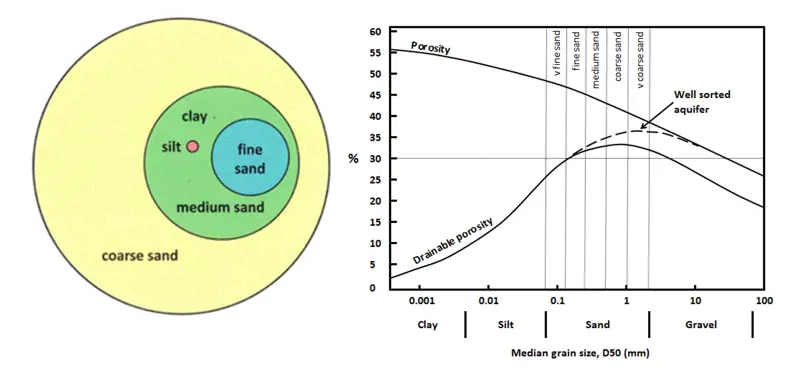
Comparative size of sand, slit and clay particles (left). The impact of grain size on porosity and drainable porosity (right).
Building sand dams
There are three technical prerequisites for locating sand dams. Firstly, the river needs to be highly seasonal – flowing for weeks rather than many months of the year. Secondly the river needs to have sufficiently sandy river sediment – see Sediment testing. Thirdly, there must be accessible bedrock – within four metres for manual digging and six metres using a standard JCB. Excellent Development has established two golden rules for sand dam design. The first is that dams must be built on bedrock (or, in rare cases, impermeable, compacted sub-soil) to a point at least 1.5 m wider than the flood width of the river. Secondly, the dam must allow the river to flow as it did before.

Spillways stop the river from flowing around the dam, whilst the apron (spill platform) prevents the dam from being undercut. The key to a successful dam design is that the spillway height should be designed to maximise amount of water stored, with 1–3 spillways constructed (depending on the size of the river and its seasonal flow). The first spillway should almost always be 1 m, with the second and third spillways between 0.5 m–1 m © Excellent Development
To ensure a smooth construction process there needs to be clarity over the ‘ownership’ and management of and access to the dam. This will be documented in legal agreements and requires recognition by both the local and traditional authorities. Construction only commences once all the local materials (sand, rocks and water) are available on site and the catchment immediately above the dam is protected from erosion. Sand dams are gravity dams which must be strong enough to hold the forces of the seasonal river flows and what they may carry. In the past, large baobab trees and even a train engine with its two carriages have been washed over Excellent sand dams – which remained intact. To prevent the dams from slipping they must also be anchored into the bedrock with steel rebars drilled 5 cm into the bedrock.
Skilled artisans familiar with stone-masonry supervise construction, checking that the foundations are cleaned and well prepared in order to form a water tight seal.

An infiltration gallery being installed prior to the next rains (left). Infiltration gallery with shallow well and hand pump (right) © Dabane Trust/Ken Chatterton
The dam is filled in so that it contains as much rock as possible, ensuring that the rocks do not touch each other or the formwork and that there are no planes of weakness. This is achieved by first filling the shuttering with 15–25 cm depth of mortar, then placing very large stones in the dam without touching, and then manually filling the spaces with medium then smaller sized stones. Every 50 cm depth, barbed wire is criss-crossed around the steel rebar and opposite stones in a helix pattern (to increase tensile strength of the dam). The process is then repeated until the given heights of the spillway and wings are achieved. Once the dam walls are complete, they are plastered inside and out and watered three times a day for three to four weeks to ensure that the cement cures correctly to maximise strength.
Benefits of sand dams
🦠 From environment and health to income generation and education
Environment
Water behind a dam raises the water table in the surrounding area which improves the soil, creating better conditions for crops and grazing. More trees can be planted which ensures that more water infiltrates the ground and less soil is washed away – creating a virtuous cycle and soil and water conservation.
Health
Waterborne diseases kill more people every year than all forms of violence, including war. Sand dams provide a safer water supply as the water stored below the surface protects it from evaporation, contamination and disease vectors such as mosquitoes and freshwater snails.
Income generation
Sand dams increase household income by reducing expenditure on water and food. They also create the opportunity to invest in new enterprises, such as exporting surplus food to local markets, or establishing small-scale fish ponds. With the money saved and earned, families are able to invest in their children’s education.
Education
Sand dams trap and store year-round safe water closer to people’s homes which frees time – especially for women and girls – to go to school, farm or pursue other work.
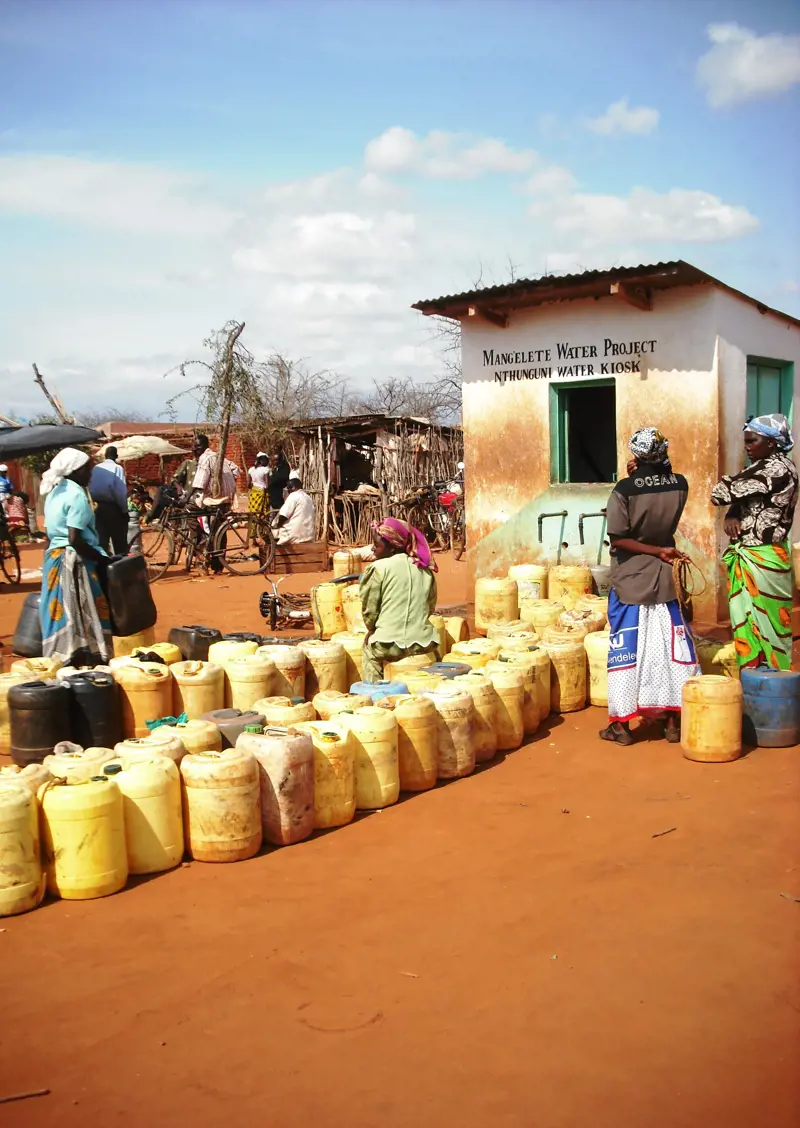
Nthunguni water kiosk collection point where the local population benefit from the sand dam aquifer © Excellent Development
Abstraction methods
Sand dams have two main abstraction methods, depending on the context in which they are applied.
Many dryland communities traditionally collect water from sand rivers using simple holes scooped into the sand. Sand dams permanently raise the water table, making water easily accessible from scoop holes all year-round by enhancing existing sources of water.
Many dryland communities traditionally collect water from sand rivers using simple holes scooped into the sand
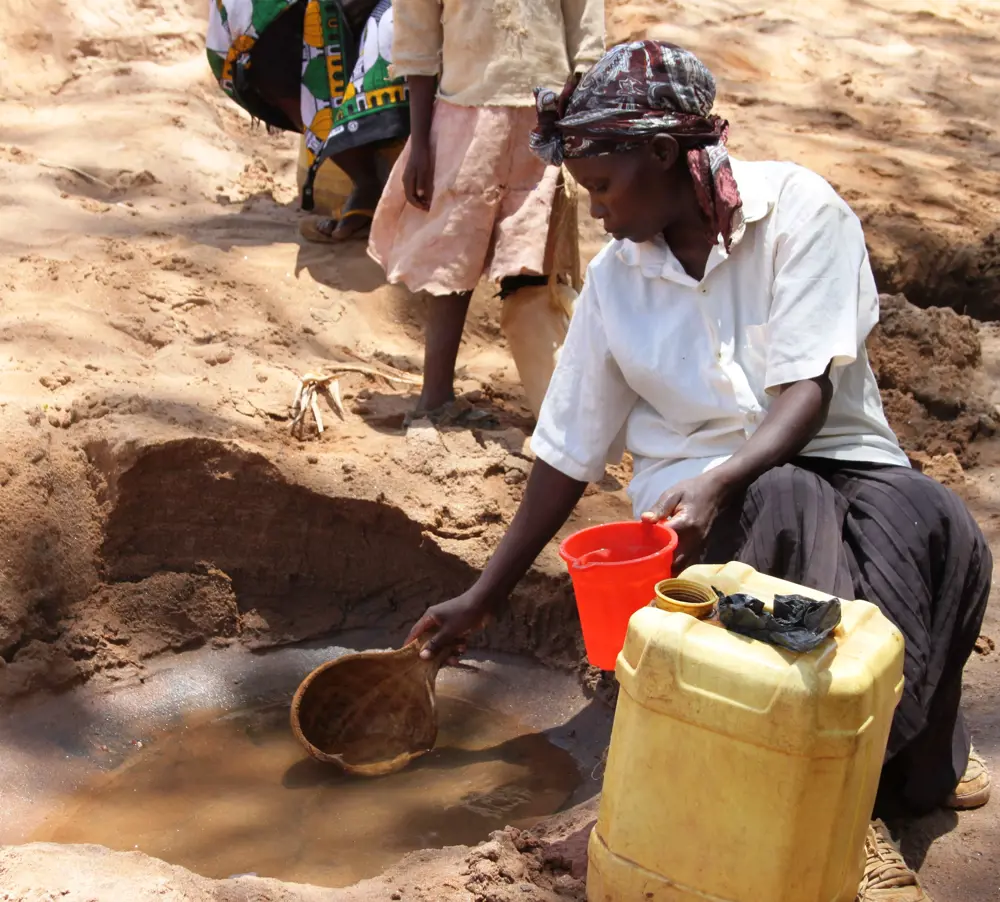
Extracting water from a traditional scoop hole from behind a sand dam © from the sand dam aquifer © Excellent Development Excellent Development
Where the scoop hole is used for domestic purposes, acacia and thorns are often used to protect the hole from livestock. A separate livestock watering point is usually established below the dam, in order to mitigate contamination of the water.
An alternative way to collect water is to install an infiltration gallery immediately after the dam is built. Pipes are built into a sand dam wall and connected to an infiltration gallery which provides water ‘on-tap’. Sometimes these are connected to a tank behind the dam which allows water to be pumped for irrigation, or connected to a shallow well in the adjacent river bank as shown in the diagram.
Once a sand dam has matured, it reduces the average time taken to collect water to between half an hour and an hour and a half – water that is filtered clean by the sand. A clean water source closer to home is crucial to combat deep seated poverty.
A small sand dam costs about £10,000, a medium one is £15,000 and the largest ones between £20–30,000. Properly located and built sand dams last for well over 30 years and there is one still in use that is more than 100 years old. Sand dam failure ratios are less than 2% (half of which can be repaired), with less than 5% of sand dams needing maintenance according to Maddrell, which makes them such a sustainable solution.
Dual purpose dams
🛣️ The potential of sand dam road crossings
In 2009, Maddrell saw a low-volume rural road crossing that had been accidently built as a sand dam. A local NGO had added an infiltration system so that a Lister diesel pump station was supplying about 40 m³ of water a day to nine villages within a 9 km radius. He now focuses more of Excellent Development’s energies on promoting these crossings. “Sand dam road crossings have great potential because they leverage far higher road infrastructure budgets to also support increased water supply and agricultural development.” added Maddrell.
Across Asia and Africa, 80% of the road network consists of rural roads. It is the bad state of many of these roads that isolates communities and prevents them from improving their standard of living. The majority of damage to unpaved roads is by water. In drylands, road crossings are damaged or destroyed when overwhelmed by peak floods. Culvert bridges usually narrow the river and when floods come, culverts can become blocked with sediment or flotsam and the water flows over the top or around the bridge. This can cause greater soil erosion both upstream and downstream.
Maddrell believes that incorporating the principle of sand dam technology with low volume road crossing designs will deliver more robust and cost-effective low-volume rural roads infrastructure. Such sand dam road crossings would minimise the costs of repair and maintenance, improve reliable access to markets and services, reduce flooding and erosion, recharge groundwater, supply millions of litres of clean water for multiple use and contribute to climate change resilience. Excellent Development estimates that sand dam road crossings built in the world’s drylands could save nearly one billion dollars a year in operation and maintenance costs while supplying a litre of clean water to everyone, every day.
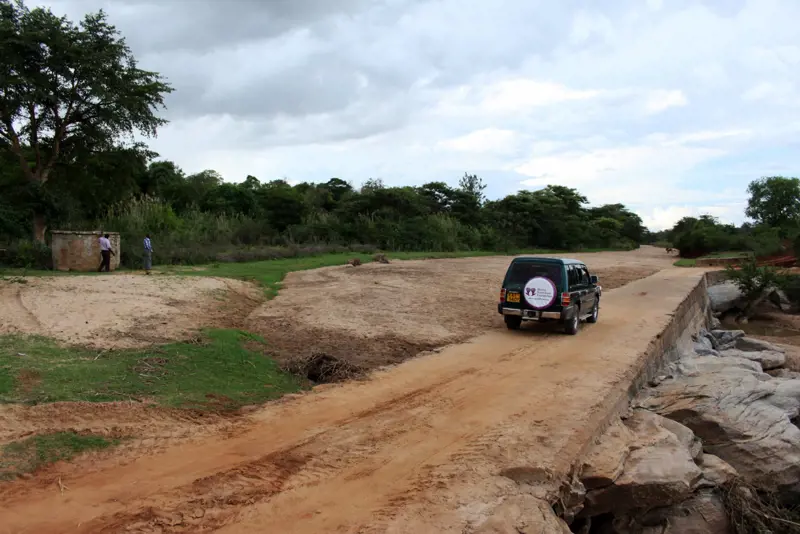
A sand dam road crossing in Makueni County, Kenya, which provides 50 m3 water per day, supplying 10 village kiosks, three secondary schools, three primary schools and a health care centre
Lessons learnt
Maddrell says that the secret to sand dams’ success is to understand seasonal river structures, as they require a different approach than traditional dam designs, with local knowledge being critical to successful design. Sand dams need to cope with constant overflows, so spillways need to be in the middle of the dam, not the side, and they need to cope with the flow and volume of flood water.
the secret to sand dams’ success is to understand seasonal river structures
In addition, because the slope of the dam (where it is narrower at the top than the bottom) is upstream and not downstream as with traditional dams, this prevents large rocks flowing over the dam and damaging it. Finally, sand dams are not always built straight across a river, sometimes it is necessary for the dam to be angled to bring the river back into the original river channel.
In terms of using community knowledge, Maddrell insists that you cannot design a sand dam without knowing how a river has flowed over the last 25–50 years, “Because water flowing down a seasonal river is, metaphorically, the life blood of the people disappearing before their eyes, they consequently know better than anyone – water engineer or not – how their river flows.”
The charity runs expeditions each summer where volunteers spend a week building dams. See its website for more information at www.excellentdevelopment.com
Contributors
Simon Maddrell is the entrepreneurial founder and Executive Director of Excellent Development. The charity was established in 2002 to address the need for improved soil and water conservation in rural Kenya. He now leads its strategy promoting sand dam technology, providing technical and learning support for its applications in different dryland contexts.
Jenny Bardwell
Author
Keep up-to-date with Ingenia for free
SubscribeRelated content
Civil & structural

Building the Shard
The Shard is one of London's most iconic buildings. The tallest in Western Europe, it was designed by Italian architect Renzo Piano and dominates the city’s skyline. Ingenia spoke to John Parker, project director for structural engineers WSP, who outlined the engineering decisions made in building the enormous steel and glass structure.
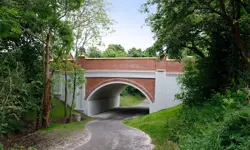
FlexiArch
Arch bridges are strong, durable and require little maintenance. However, very few had been built since the early 1900s until the FlexiArch was developed and launched in 2007. Now, there has been a minor renaissance for this ancient form of construction.

Creating user-friendly buildings
For Michelle McDowell, a former Business Woman of the Year, a passion for joined-up design thinking and building information modelling with a user-friendly approach has enabled her to pioneer revolutionary changes in her field.

Troja Bridge
In November 2014, one of the world’s largest network arch bridges was officially opened in Prague. The UK may soon have its first network arch bridge if the go-ahead is given for a new rail project in Manchester.
Other content from Ingenia
Quick read

- Environment & sustainability
- Opinion
A young engineer’s perspective on the good, the bad and the ugly of COP27

- Environment & sustainability
- Issue 95
How do we pay for net zero technologies?
Quick read

- Transport
- Mechanical
- How I got here
Electrifying trains and STEMAZING outreach

- Civil & structural
- Environment & sustainability
- Issue 95